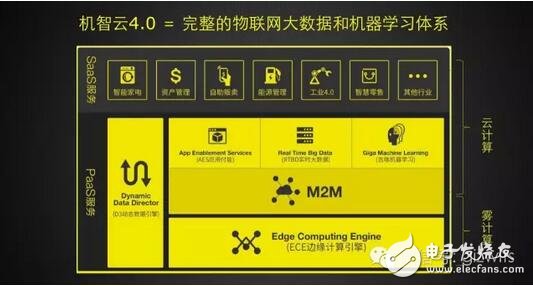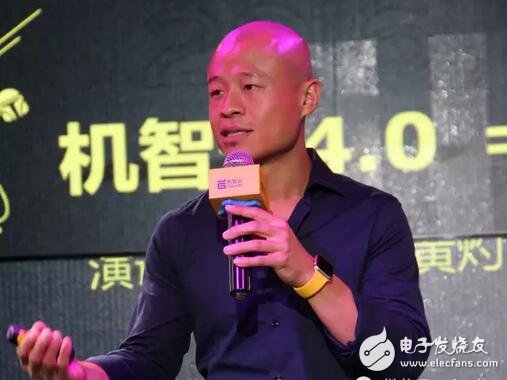Jack Huang, a computer science student from the University of Kentucky, and an EMBA from Columbia University/London Business School, graduated from Lexmark, the second largest digital printer company in the United States, to conduct networked printing technology research. In 1999, he joined the world as a technology partner in New York. Mimeo, a cloud printing services company, is responsible for technology development and product direction. He has been invested by HP, Draper Fisher and Goldman Sachs. The company is still the leader of US business cloud printing.
In 2006, he founded the Zoomino Semantic Search Engine Company in New York and provided on-site search technology for large websites such as the New York Times. In 2008, he returned to China as the CEO of Wit Cloud, and was fully responsible for the definition and development strategy of the Wisdom Cloud product. In the following article, the definitions of fog calculation, demand support, and the advantages of wit cloud calculation in landing fog are introduced, and the characteristics of fog calculation are discussed .
Fog calculation definition
Fog is calculated (Fog CompuTIng) is a cloud (Cloud Computing) extending concept, primarily used to manage data from the sensor and the edge device, the data (data) processing device and the application set in the edge of the network, rather than All saved in the cloud data center.
Add a layer of "fog" between the terminal device and the cloud data center, that is, the network edge layer, such as adding a small server or router with memory, and put some data that does not need to be placed in the cloud directly on this layer. Processing and storage can greatly reduce the computing and storage pressure in the cloud, improve efficiency, increase transmission rate, and reduce latency.

The fog computing technology uses a distributed computing approach to distribute computing, communication, control, and storage resources and services to users or devices and systems that are close to the user. It can be said that the fog calculation expands the network computing mode of cloud computing, and extends network computing from the network center to the edge of the network, thereby being more widely applied to various services.
Fog calculations are more geographically distributed and have a wider range of mobility, which allows it to adapt to the growing number of smart devices that do not require a lot of computation. For some time-sensitive applications such as real-time and streaming applications, fog computing has a greater advantage. For example, the thermometer's readings per second are not required to be uploaded to the cloud. What fog computing technology needs to do is to get an average based on real-time data and then upload it to the cloud every half hour or so. If the temperature is abnormal, the sensor can still respond quite intelligently and quickly.
Fog calculation is as vivid as cloud computing. The clouds float in the sky, high above, out of reach, deliberately abstract; while the fog is realistic, close to the ground, right next to you and me.
Demand support
With the development of sensors, the Internet of Things is sweeping almost every industry. The number of intelligent terminals and the scale of data collection are increasing geometrically, which brings great pressure on the calculation and storage of enterprises. The real-time data does not need to be transmitted to the cloud storage computing, and then the required data is transmitted back from the cloud. Instead, the useful data can be directly processed at the edge of the network, which greatly improves the efficiency of the enterprise.
Fog computing is not composed of powerful servers, but consists of weaker, more distributed, large peripherals outside of large data centers. These peripherals include smart terminals themselves, including smart devices and the cloud. Connected gateways or routing devices can penetrate factories, cars, appliances, street lights, and all types of computing devices in people's physical lives.
commercial value
1. Reduce energy consumption:
Cloud computing puts a large amount of data into the "cloud" for computing or storage. The core of the "cloud" is a "data center" with a large number of servers and storage. Since semiconductor chips and other supporting hardware are still very power-consuming, the power consumption of the global data center is equivalent to the power supply of 30 nuclear power plants, and 90% of the power consumption is wasted because the efficiency is very low. Google’s global data center has reached 300 million watts of electricity, which exceeds the electricity consumption of 30,000 American households. When the amount of data transmission continues to grow exponentially in the future, the cloud center will no longer be able to sustain it. This data transmission refers to the transmission between a large number of wireless terminals and the "cloud".
2. Improve efficiency:
With the advent of the Internet of Things, the growth of various types of terminal devices, including home appliances, wearable devices, automotive peripherals, industrial agriculture, and commercial equipment, which require network connection, will generate extremely large amounts of data transmission and reception. The I/O (input and output) bottleneck between the data center and the terminal causes the transmission rate to drop greatly, and even causes a large delay. Some devices that need real-time response cannot guarantee normal operation, such as: drones, security alarms. , monitoring equipment, etc.
3. Data analysis:
The solution for a large number of enterprises for massive data collection needs is to reduce the frequency and total amount of data collection. For example, sampling every 10 minutes may be collected hundreds of times a day, and the accuracy and efficiency will be greatly reduced. Some need a large amount of uninterrupted Data collection devices will reduce their service value, and some devices that need timely decision-making will wait for all data to be uploaded to the cloud computing decision before returning to the device end, which will greatly reduce the service capability.
The following is a classic answer from the cloud cloud CEO Huang Zhuo on the landing and deployment of fog.

Xiao Bai: What are the advantages of wit cloud landing fog calculation?
Jack: WitCloud has more than 6 years of experience in IoT technology accumulation and innovation. Currently, the platform supports more than 7 million IoT devices. It has been at the international advanced level in technological innovation and application. With the continuous development of the IoT industry, it has been connected. The computing power of the device is also increasing. We have pushed the application of “fog computing†further in the IoT field to meet the specific functional requirements of our customers' products. As a full stack IoT Platform, Wisdom Cloud has strong control over cloud, management and end. This is a very special advantage for our platform landing fog calculation.
Xiao Bai: Is there any difference between the fog calculation proposed by Wisdom Cloud and the fog calculation proposed by Cisco?
Jack: Our landing strategy for fog computing is different from communications equipment vendors like Cisco. Cisco mainly relies on routers and switches to deploy fog computing, but these "pipelined" devices are suitable for data handling, data cannot be parsed, and can not affect the operation of smart terminals and the cloud. It is difficult to apply "fog computing". . The power of the "fog calculation" of the wit cloud now falls on the larger number of communication modules DTU (Data Transfer Unit) and Gateway (Networking Gateway). These devices are all directly controllable computing units of the wit cloud. "Fog computing" is the dynamic allocation of computing and storage capabilities from the cloud to these edge devices.
Xiao Bai: What innovations does wit cloud have when deploying fog computing?
Jack: Interestingly, in the past 20 years, the rise of cloud computing has moved the end of computing and storage to the cloud, facilitating data aggregation and unified management. Now "fog computing" allocates the calculation and storage of aggregates to the pipeline in this part. And the end, forming a more responsive and ultra-large-scale computing system. This new type of computing system puts forward new requirements for a company's control over cloud, management, and dynamic management capabilities. The cloud, tube, and end technology integration platform is easy to close and land.
Another innovation we have is that we give the ability to dynamically deploy computing to low-level processors, and even a few dollars of ordinary microcontrollers (MCUs) can participate in fog calculations.
Xiao Bai: How to deploy wit cloud computing?
Jack: The Wisdom Cloud ECE fog computing framework embeds a "micro-container" on the DTU or gateway that can execute "micro-applications" made up of lightweight scripting languages ​​such as Javascript, Python, and Lua. These "micro-applications" can do data processing, protocol conversion, and interoperability between devices. Developers can write various scripts directly in the cloud, which can be easily pushed to the micro-application container through the ECE system, and the computing power can be deployed to the device in real time. The device does not need to be restarted, nor does the original system OTA firmware upgrade be needed. Instead, you only need to update its algorithms and micro-applications on the fog side.
Devices with “micro-applications†can achieve millisecond-level data acquisition and analysis according to business needs, provide greater analyzable data volume, and have local judgment capabilities, which greatly improve accuracy and efficiency. However, the computing on the device side does not replace the cloud computing. Instead, the device end processes the micro-application data to send the processed useful data to the cloud. The cloud then performs data aggregation, and the device end effectively amplifies the cloud aggregation capability. . Now, through the fog calculation method, the cloud can quickly and flexibly update its micro-application on the fog side, effectively upgrading the "software-defined hardware" to the "cloud definition hardware".
The real computing revolution in the future will be around you and me - not in the clouds, in the fog.
M8 Circular Connectors,M8 Industrial Waterproof Connector,M8 Female Base Waterproof Connector,M8 Waterproof Connector
Shenzhen HuaTao Electronic Co., LTD , https://www.htconnector.com